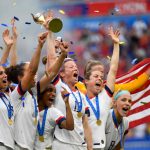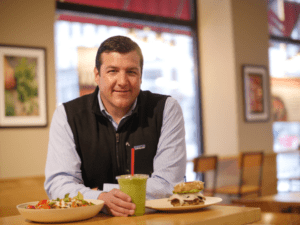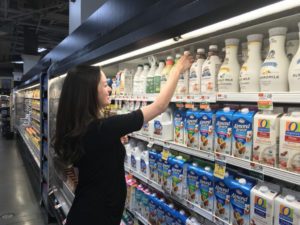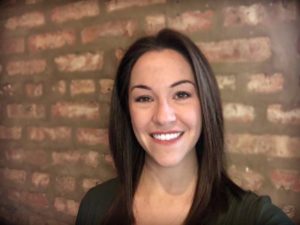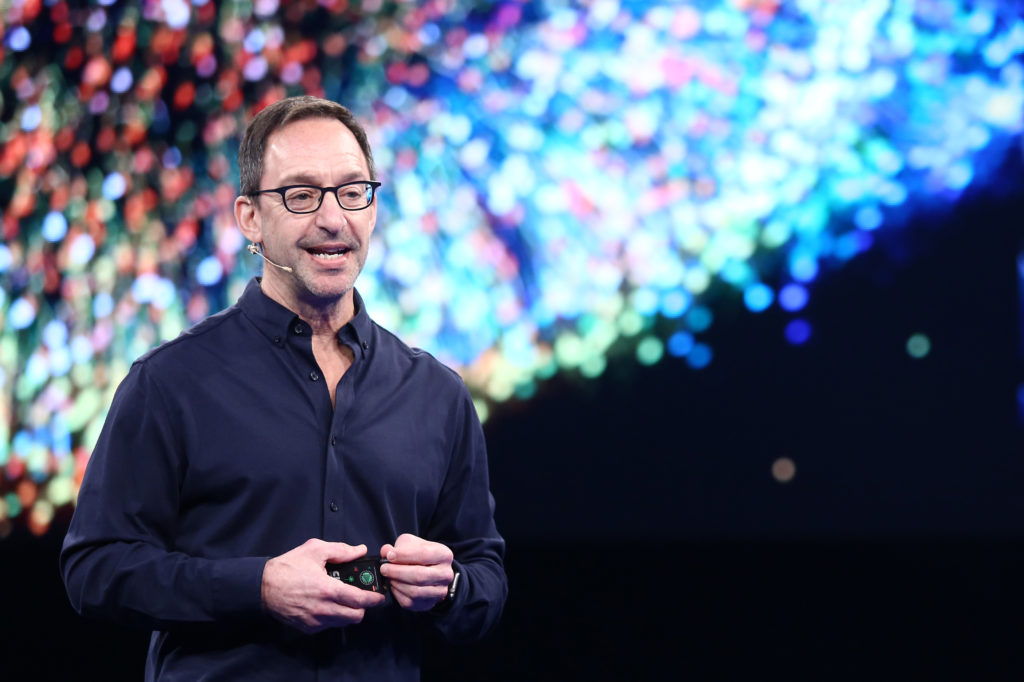
Matt Biespiel, CMO, Consultant, Ex. McDonald’s, Visa, Olympics Brand Leader
I’ve been a member of Brand Innovators for a year and a half and the best part about it, undoubtedly, is the people. This past winter, I was fortunate enough to meet Matt Biespiel & what I recall most is his creative benchmark of “yes, no, wow,” or in his words, the only ways to react to a creative idea. Brief career rundown: Matt started at two of the world’s renowned agencies, Ogilvy & Mather and Y&R, before leading advertising for Visa U.S., overseeing one of the most effective and enduring campaigns in American marketing history: “Visa. It’s everywhere you want to be.” He then pivoted to the U.S. Olympic Committee and McDonald’s, where he stewarded the global “i’m lovin it” campaign across 120 countries.
I spoke with the former Canne Lions marketer of the year and namesake of MB Brand Consulting LLC about the people, process and precision required to keep brands like the Olympics and Visa humming, and the type of creative that drives 70 million guests to enjoy meals at McDonald’s every day.
This interview was conducted Boston to Chicago via Facetime & was condensed and edited for clarity.
Catching Up
Matt, thanks for taking the time. What have you been up to since we met at Sundance?
The headline would be “capability-building.” This time last year, I ran a curated program at Cannes which led to a speaking engagement with Rebels and Rulers in Romania and also Days of Communications in Rovinj, Croatia – which is gorgeous, by the way. We focused on how great creative work starts with the client. That work led me to another gig in China where I met with 1,000 Alibaba marketers.
Interesting – what do you attribute the interest from Eastern Europe to?
We forget that not long ago, Eastern Europe was in the eastern bloc so their marketing communications and brand-building capabilities aren’t what they are in Western Europe. There’s a hunger for outside thinking to help shape perspectives.
Olympic Era
Continuing the international theme, working for the Unites States Olympic Committee had to be a career highlight. There’s so much inspiration to pull from on that front. Tell us about that creative process and how you honed in on a message.
Well before I was a marketer, I was an aspiring Olympic gymnast. I got close to making the Olympic team, but not close enough. So going to the USOC was a labor of love and a way to give back to the Olympic movement.
Heading into the 2002 Salt Lake City Winter Olympics, the brief tasked us with three things: clarifying what the US Olympic brand stood for, connecting with consumers and raising the brand’s value for sponsors. The sponsorship remit was a challenge – would brands want to sponsor an event that, according to conventional wisdom wouldn’t return to U.S. soil for quite some time, or the Super Bowl which happens every year?
In tackling the work, we realized the brand is really the US Olympic athletes but you don’t know who they’ll be until the 11th hour and even when they’re announced, they’re not household names. We had to get clear on what makes them unique regardless of who they are, and that’s Olympians as role models vs. professional athletes. We decided to “re-package” the athletes as part of a bigger visual identity, partnering with a Canadian fashion house, Roots, to create a line of apparel that consumers would see the athletes wearing and could also buy. And it became the best-selling line of Olympic apparel, ever.
Wow. That must’ve been amazing to be a part of.
You get lucky sometimes. One day, walking down the main street in Park City, we saw a line that went on for blocks. As we approached, it lead to The Roots store. Our vision all laddered up to making the athletes more visible, and it worked.
More broadly, the brand strategy was that Olympians are “the best of who we are.” Everyone can relate to that sense of national pride and given the timing, wanted to believe in something greater than themselves [the 2002 Games came soon after 9/11].
Hearing this takes me back to my childhood obsession with the Olympics. I was hooked on those documentaries of Russian and Romanian gymnasts & what it took for them to become Olympic hopefuls. How did you strike a balance between wanting to sell hope, yet knowing sometimes tragedy is what hooks people to the story?
The strategy was pretty simple – now it seems obvious but it actually hadn’t been done before. Leading up to the Games, we worked with the sports’ national governing bodies to learn who they were placing their bets on. We ended up with 15-20 athletes and launched a proactive PR campaign. We had no issues getting the medal hopefuls coverage in the sports pages but we broadened our scope to the likes of Cosmo and Vogue, and introducing those audiences to new sports, like half pipe. In fact, one of the athletes, Trisha Burns, “taught” me how to do the half pipe – I sucked at it. Scary! Anyway, by the time she got to the games, people knew her, identified with her dreams and recognized her as a role model.
Visa & McDonald’s
Taking a step back, you were at Visa before the USOC. Connect those dots for us.
Visa is a longtime Olympic sponsor and the “we’re everywhere you want to be” tagline really fit the brand. The lesson from my Visa days is differentiating a parity product – Visa and Mastercard for example. They’re distributed through the same channels, accepted at the same merchants, priced virtually identically – so we decided to differentiate by showing that a card is only as good as the number of places you can use it. We elevated the brand by associating it with American Express and featuring places that took Visa and not American Express, like the world’s biggest sporting event – the Olympics. Amex was really was just a foil; they weren’t the competition because they’re a prestige product with smaller share, but the approach brought the strategy to light in an exceptional way.
While I can’t take credit for the original idea, I can take credit for extending the idea of acceptance and sustaining the campaign when we launched the Visa Check Card. We had to educate consumers about a branded debit card that could be used at various retailers [at the time, the market was bank ATM cards that could only be used at the associated bank]. We created a campaign of familiar faces writing checks to pay for purchases and the pain points, like having to show multiple forms of identification. Bob Dole, Deion Sanders, Paul McCartney – today it’s influencer marketing; to me it’s celebrity marketing with different lipstick.
Tell us about your time at McDonald’s – another Americana brand.
I spent 12 years at McDonald’s as the global brand lead. During that time, we had one campaign “i’m lovin’ it.” Before it, McDonald’s changed the campaign every two years. When I came in, it had just launched so I needed to nurture and sustain it – it’s 2019 and the campaign is still running around the world.
A global brand with one tagline. How did you ensure it resonated?
The strategy was called “glocal” – global voice, local accent, largely local execution. One activation that stands out came from the best brief to street artists around the world: how do we connect fans love for football [soccer] with the love they have for McDonald’s fries? We took the best work and used it on our packaging. There were other components to drive sales – an augmented reality app & a documentary during the World Cup – but it was the first time we ever changed the iconic red packaging.
Creative Process
You just described the “best brief”- for an agency, what makes a good client?
Companies need to have more right brain thinkers in marketing. Most marketing departments are staffed with logical, rational, brilliant marketers – but you’re asking that individual to use a different side of their brain to evaluate creative ideas. Creative ideas are inherently emotional and a brief can’t have 15 RTB’s or the output is bland. Strategy is about making choices and the best briefs make the choice for the agency. It takes a lot of courage, and whole brain thinkers, to do that.
Google Pixel for example – I’m sure there’s a lot of ways you can sell that thing. What do they focus on? The fact that it takes great pictures. Clients who can get it down to one thing and dramatize that choice, win.
I’ve heard you say the single most important factor in an agency’s work is the nature and behavior of the client. Making those choices is part of that.
Yes, to get great work you need the people, process and precision. And culture threads through all of that. I recall telling the McDonald’s team I wanted us to be marketer of the year at Cannes – what did that say to all the creatives? “I can do the best work of my life on that brand.” Who didn’t want that brief? But at the end of the day, it’s about driving commerce. Agencies can make it hard for clients to say yes; you can chase awards but the output needs to be commercial creativity.
For QSR marketers – what best practices can you share?
1. The best plans balance sales overnight with equity over time. Most brands go either / or and balance is key.
2. Look beyond the food – too many QSRs focus on the food. It’s food and experience. Again, balance.
3. Keep the restaurants modern and inviting. The physical experience must be in sync with how you’re marketing the brand.
I’ll never forget a comment you made at Sundance – there’s only 3 ways to react to a creative idea: yes, no, or wow. Is that also the aperture through which you view your life? Are you unapologetic in your choices?
I honestly haven’t thought about applying that lens to my life but I’m definitely in a “yes” mode at this stage of my life. As a client, I love “yes, no, wow.” Oftentimes, you see work that comes in and don’t know how to react so having a simple framework helps. A lot of brands have scorecards like that – at McDonald’s, ours was on a 1-10 scale. It gives the client and agency a shared way of thinking.
You can’t always have 10’s. Do you grant permission for 5’s in certain instances?
Well, you’ve figured that out sooner in your career than I did. Sometimes things get in the way of 10’s – time and budget, for example. Everything can’t be a wow. But that makes the wow’s even sweeter.
